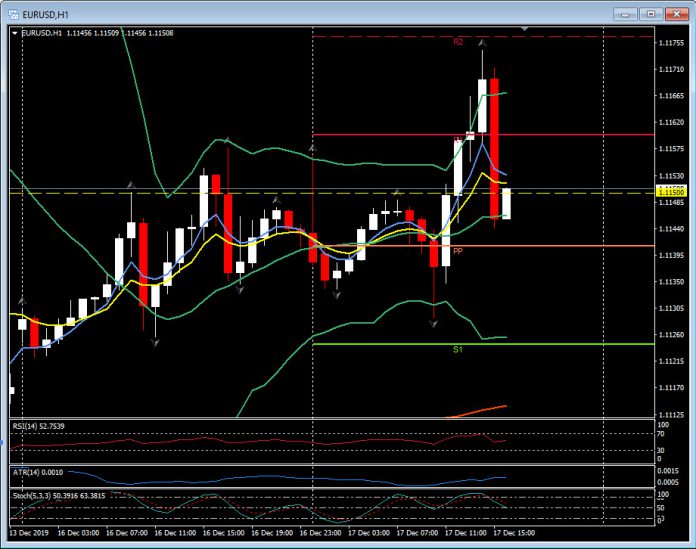EURUSD, H1
November housing starts rose 3.2% to a 1.365 mln pace, which sharply exceeded forecasts, after bouncing 4.5% to 1.323 mln in October (revised up from 1.314 mln). November building permits were up 1.4% to a 1.482 new cycle-high, following October’s 5.0% rebound to 1.461 mln. Single family starts increased 2.4% after rising 1.6% previously (revised from 2.0%). Multi-family starts improved another 4.9% versus the 11.8% gain previously (revised from 8.6%).
Starts under construction were up 1.0% after inching up 0.2% in October (revised from 0.1%). Housing completions were the only data that fell short of estimates, with a -6.6% drop, versus the 12.7% jump previously (revised from 10.3%).
Today’s housing starts data are much better than expected, and will support the renewed confidence in the US economy.
The solid starts and permits path into year-end signal that the construction-related measures are finally responding to the second wind for the sales and mortgage-related housing data in 2019 with the Fed’s policy pivot. Greater strength in permits than starts suggests that starts will climb further into 2020, and this implies an extended bounce for the new home construction component of construction spending that drives the residential component of GDP. The housing sector should continue to climb as long as mortgage rates stay low and Fed policy stays accommodative. Note that yesterday’s reported five-point pop in the NAHB Home Builder Index to a 20-year high of 76 in December highlights upside risk for all of the housing reports as we enter 2020. The NAHB Index is now just below the 78 all-time high in December of 1978.
US industrial production rebounded 1.1% in November, more than double the estimate, after dropping -0.9% in October and sliding -0.4% in September. This is the first increase since July, and was supported by the end of the UAW strike.
Hopefully a robust housing sector and industrila production increases in Q1 will offset the hit from the halt to Boeing’s 737 MAX production in January, which should subtract measurably from GDP growth. If the halt lasts through February, which is the assumption of many, it could subtract -0.4% from Q1 GDP growth.
The Dollar shrugged off the better housing and industrial production data, leaving EURUSD down from 1.1170 to breach 1.1150 and USDJPY idling under 109.60, but north of 109.50. The FX market appears to be moving into holiday mode now, with USD consolidation likely to continue. Equities, meanwhile, are little changed following the trade deal rally that saw record high closes across the board on Wall Street yesterday. The Dow is -0.07% lower, the S&P 500 is 0.02% higher and the NASDAQ is 0.07% firmer in pre-market futures trading. The indexes gained 0.4%, 0.7% and 0.9% respectively in regular trading Monday to post new record high closes amid optimism over the completion of Phase One of the US-China trade deal late last week.
Click here to access the Economic Calendar
Stuart Cowell
Head Market Analyst
Disclaimer: This material is provided as a general marketing communication for information purposes only and does not constitute an independent investment research. Nothing in this communication contains, or should be considered as containing, an investment advice or an investment recommendation or a solicitation for the purpose of buying or selling of any financial instrument. All information provided is gathered from reputable sources and any information containing an indication of past performance is not a guarantee or reliable indicator of future performance. Users acknowledge that any investment in Leveraged Products is characterized by a certain degree of uncertainty and that any investment of this nature involves a high level of risk for which the users are solely responsible and liable. We assume no liability for any loss arising from any investment made based on the information provided in this communication. This communication must not be reproduced or further distributed without our prior written permission.



















